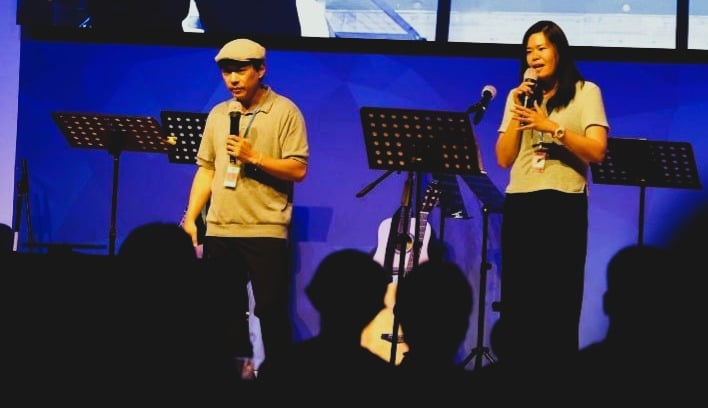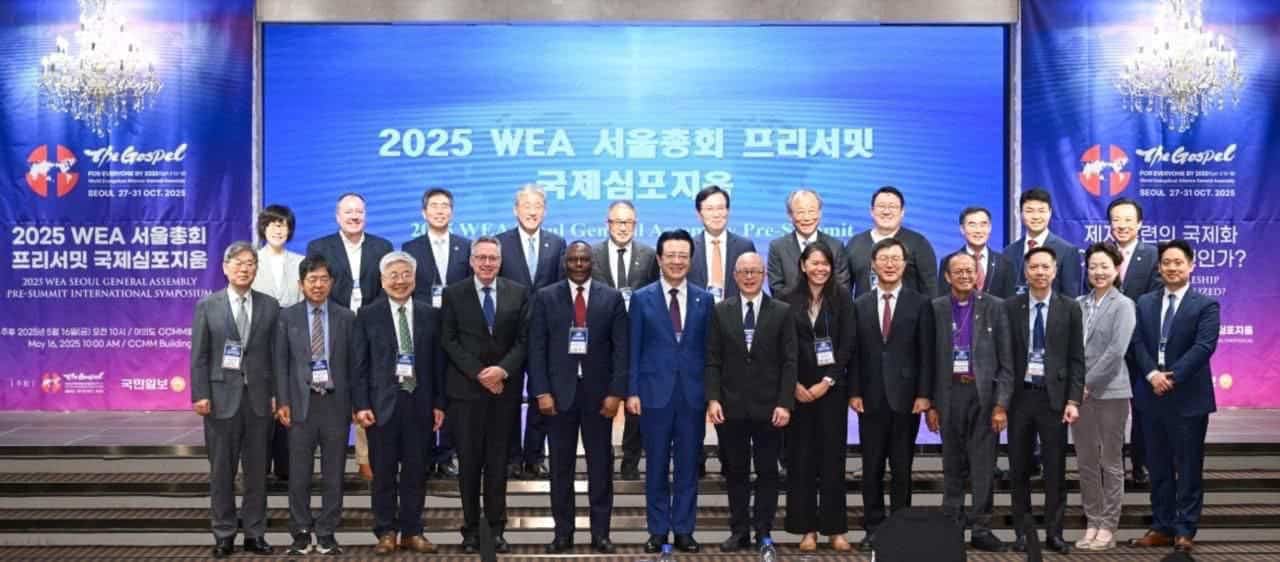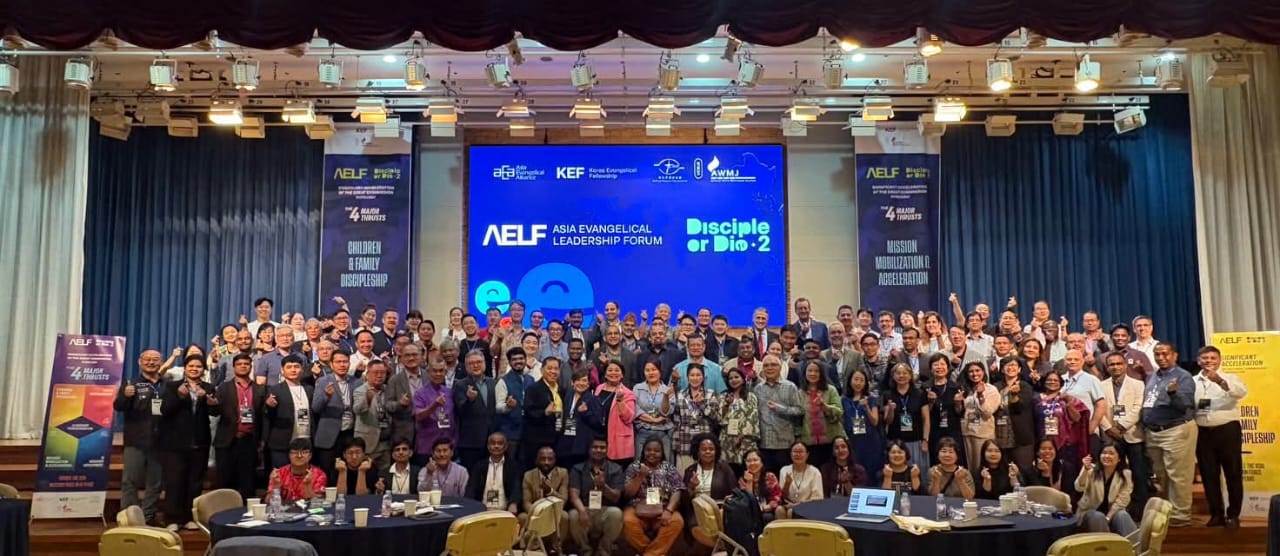—————————————————
GUINEA: FUTURE IN THE BALANCE
—————————————————
Nzerekore is located in the Forest Region of southeastern Guinea,
West Africa, close to where the borders of Liberia, Guinea and Cote
d’Ivoire meet. In the words of Major Algassimou Barry, the Prefect
(government administrator) of Nzerekore and the surrounding
district, “We’re at the heart of a region in turmoil.” (July 2004,
Link 1)
BAPTISM SERVICE ATTACKED IN NZEREKORE
On Wednesday 19 October, a Christian baptism ceremony in the Gonia
neighbourhood of Nzerekore was attacked by Muslims who were
complaining that music from the church was disturbing their prayers
in a nearby mosque. Ten people were injured, two seriously, and
several houses were sacked. The Muslims rioted again on the Friday
evening and razed a local video store. Elite soldiers, known as
Rangers, had to be deployed to restore calm. Several guns were
confiscated and a curfew was imposed. Over the weekend (22-23
October) some 100 people were arrested, with 56 still detained. (Link 2)
The Christians belong to the Guerze ethnic group which has a long
history in the Forest Region of southeastern Guinea. Most Guerze
practise Christianity or African Traditional Religion (ATR). The
Muslims are Konianke, a sub-group of the Mandingo (also known as
Malinki or Mandinki) people who have been Muslim since the 13th
Century. The Konianke, who are traditionally nomadic traders,
migrated south from northern Guinea during the late nineteenth
century when Guinea was under French rule and the French had
established a colonial administration in the Forest Region.
Ethnic-religious violence had previously erupted in Nzerekore on 16
June 2004 when, according to the US Department of State Human Rights
Report 2004, “a Guerze youth on a motorcycle collided with a crowd
leaving a mosque”. Of the 238 people arrested, 234 were Konianke
and 90 percent were Liberian. Two people died in that clash, but the
toll would have been much higher had the Guinean security forces not
moved so quickly to quell the fighting. (Link 1)
The incidents in Nzerekore arise out of several much larger issues:
the ethnic tensions created by Mandingo southward migration; the
religious tensions created by Muslim migration into regions
historically populated by settled Christian and Animist tribes; the
ethnic and religious superiority complex of many of the Mandingo
Muslims, and the proliferation of weapons, bored ex-combatants and
entrepreneurial criminals and soldiers for whom “war is more
lucrative than peace”.
Clearly, the Forest Region of southeastern Guinea must be viewed as
a potential flash-point for future, major ethnic-religious conflict.
Attention must be given to this region now, before disaster strikes
and spreads like shock-waves.
ETHNIC AND RELIGIOUS TENSIONS
The ethnic and religious tensions in the Forest Region of Guinea are
similar in many ways to the ethnic and religious tensions that have
manifest themselves around the wider region and all along Africa’s
ethnic-religious fault-line. Migration by Muslim tribes, into
regions long inhabited and farmed by non-Muslim tribes, has created
competition for land and resources. Increasingly over the past
decade, religious tension has been exacerbated by the revival of
Islamic zeal and orthodoxy. This has caused Muslim intolerance and
anger to escalate in proportion to Muslim feelings of both
superiority and victimhood. Once violence erupts it is virtually
impossible to prevent it taking on a religious dimension. The main
threats to peace come from Islamists stirring up feelings of Muslim
supremacy and inciting conflict; and provocation by those who profit
(financially or politically) from conflict. The primary needs are
good governance, justice and disarmament.
Twelve months ago WEA RLC released a News & Analysis posting on
ethnic-religious violence in Monrovia, in neighbouring Liberia,
which touched on many of the same issues. Likewise, many of the WEA
RLC posting concerning neigbouring Cote d’Ivoire (Ivory Coast) over
the past 3 years, and on the religious violence in Plateau state,
central Nigeria, have dealt with the same issues. (Link 3)
The main difference in Guinea, when compared to the above mentioned
nations, is that in Guinea, Christians are a very small minority
(less than 5 percent) in a country that is more than 85 percent
Muslim, making the Christians even more vulnerable.
“LIBERIA, THE LURD AND GUINEA’S FOREST REGION” (ICG)
Thrown recently into this pot of simmering ethnic-religious tension
is the most dangerous ingredient of all: a large quantity of armed,
bored, exiled Muslim Liberian ex-rebel fighters. Guinea’s support
for Liberian rebel groups has come back to bite it.
In an excellent report entitled “Stopping Guinea’s Slide” (June
2005), International Crisis Group (ICG) looks at the Forest Region
as a potential flash-point where conflict could have dire
consequences. ICG warns: “For some time, both Guineans and
Guinea-watchers have been worried that a conflagration in the Forest
Region could spark a generalised meltdown throughout the country.”
(ICG report: Link 4)
There is considerable documentary evidence that the government of
President Conte in Guinea trained, armed, funded and gave refuge to
Liberian rebels fighting against the government of Liberian
President Charles Taylor during the Liberian War. ICG maintains
“LURD fighters trained at the Kankan and Macenta military bases and
were armed by the government from 1999 if not 1998.” (ICG report, p 21)
ICG notes that 80 percent of Liberian refugees are Mandingos who are
unwilling to return to Liberia where they feel they are not accepted
and are regarded as ‘foreigners’. But as ICG also notes, “A similar
dynamic exists in Guinea, primarily in Macenta and N’Zerekore
prefectures, where tensions between Forestier peoples, who consider
themselves the original settlers, and Mandingoes, who are considered
strangers, as in Liberia, are very high.” (p 21)
The tension has been stretched to crisis levels in recent years
because, since peace was brokered in Liberia in August 2003, many
hundreds of LURD rebels have moved across the border into the Forest
Region of Guinea where they can blend in amongst the thousands of
Liberian refugees and find protection amidst their fellow Konianke
Muslim brothers and sisters. Tension is further exacerbated by the
fact that Taylor was from the same ethnic group as the non-Muslim
peoples of Guinea’s Forest Region.
The UN’s Integrated Regional Information Networks (IRIN) reported in
July 2004, “Residents in Nzerekore said the town was packed with
hundreds of Liberian gunmen made idle by a peace agreement which
ended 14 years of civil war in their own country in August last
year. ‘The town is full of them, everybody knows that,’ a local
human rights activist in Nzerekore told IRIN. ‘…we know that
they’re still carrying their weapons and that they help their
brothers the Konianke when the disputes explode between the two
[Konianke and Guerze] communities,’ he said.” (Link 1)
The ICG adds a further layer to this situation. Under the
sub-heading “LURD and the lost Mande Empire” (p 21), ICG explains
that between 1905 and 1915, African warriors menaced the Manenta and
Nzerekore prefecture
s and the wider region, preventing the French,
English and American-Liberians from claiming control of the region.
LURD emerged in the Forest Region and is made up primarily of
Mandingoes. The Mandingo fighters have a strong sense of history.
They not only remember the warriors’ dominance of the region in the
early 20th Century, but they also remember and long for the days of
the great Mali (or Mande) Empire (14th to 17th Centuries), when the
Mandingoes, the founding fathers of Mali, controlled trans-Saharic
trade from the Middle East to West Africa. According to ICG, “These
[LURD] fighters sometimes talk about their longer-term mission being
the restitution of a glorious Mandingo empire.”(p 21)
ICG also notes that for many, “war is more lucrative than peace” (p
15). According to ICG, the military “has entrenched interests in
pillage”. ICG claims the military is involved in cross-border trade
and in regional arms flows, including to the rebel “Forces
Nouvelles” in Cote d’Ivoire (p 19). But as ICG notes, what usually
starts out as a simple economic interest, can develop into serious
security problems.
FUTURE IN THE BALANCE
Only months after the Liberian war ended, ICG released a report on
the possible consequences for Guinea. It was entitled, “Guinea:
Uncertainties at the End of an Era”. (Africa Report No 74. 19
December 2003). ICG commented, “The large number of weapons and
irregular combatants circulating in this region is one of the
principal elements of concern. These armed groups with their
unpredictable allegiances could serve the interests of
politico-military elites who seek to create disorder and or to take
power by force.”
The June 2005 ICG report claims that today many LURD former
combatants in Guinea are angry, believing that Conte has abandoned
them. Also, in Liberia there are both pro- and anti-Guinean forces
actively recruiting ex-combatants. ICG even comments that it is
difficult to understand why no attacks have yet materialised. (p 21,22)
In the midst of this, Guinea is approaching a period of political
uncertainty. President Conte is critically ill, there is no obvious
successor, and the nation is soon to hold its first local elections
for 10 years. On Sunday 18 December, Guineans will be able to vote
for majors and rural councils in an election that will be seen as a
test of the country’s democratic reform process.
IRIN reports, “Guinea, where more than half the population lives on
less than a dollar a day, has been ruled by Lansana Conte since he
came to power in a 1984 coup. But his ill health and the lack of a
clear successor in either the government or the opposition have led
to worries that a dangerous power vacuum is looming.
“In its [June 2005] report, [International] Crisis Group said that
disaster could only be averted if both the opposition and the
international community engaged fully in the reform process,
starting with these critical municipal elections. They will largely
determine the quality of Guinean democracy. If they fail, the
presidential succession will likely be disastrous.” (Link 5)
After decades of Marxist, pro-Islamic persecution of the Church,
there is now religious freedom in Guinea, which is 85.4 percent
Muslim, 9.7 percent African Traditional Religion (ATR), and 4.7
percent Christian. Operation World reports that the Guinean Church
has embraced mission and in the past decade indigenous workers have
begun witnessing cross-culturally to previously unreached people
groups. The Guinean Church is growing. But many analysts fear that
Guinea is “primed for instability” (IRIN), and heading for a crisis.
IRIN reports that diplomats and aid workers have long worried that
the Forest Region is “a powder keg waiting to explode”. For Guinea,
and especially for the Church in Guinea, the future is truly in the
balance.
Elizabeth Kendal
[email protected]
Links
1) GUINEA: Ethnic tensions threaten to explode in southeast.
UN Integrated Regional Information Networks (IRIN) 7 July 2004
http://www.irinnews.org/print.asp?ReportID=42067
2) GUINEA: Dozens arrested after ethnic clashes in south-east.
IRIN 24 October 2005
http://www.irinnews.org/print.asp?ReportID=49722
ALSO
WEA Religious Liberty Prayer Bulletin – No. 351 – Wed 02 Nov 2005
GUINEA: BAPTISM SERVICE VIOLENTLY ATTACKED
http://www.worldevangelicalalliance.com/news/view.htm?id=228
3) World Evangelical Alliance Religious Liberty News & Analysis
Past postings may be found at http://www.ea.org.au/rlc
4) ICG Stopping Guinea’s Slide.
Crisis Group Africa Report No 94, 14 June 2005
http://www.crisisgroup.org/home/index.cfm?id=3509&l=1
5) GUINEA: Opposition throws hat into ring for local elections
CONAKRY, 31 Oct 2005 (IRIN)
http://www.irinnews.org/print.asp?ReportID=49850
============================================
**WEA Religious Liberty News & Analysis**
<[email protected]>
============================================
Please feel free to pass this along to others giving attribution to:
“World Evangelical Alliance – Religious Liberty News & Analysis.”
To subscribe for Religious Liberty News & Analysis, please send
your request to Elizabeth Kendal <[email protected]>.
Please include your name and country or state of residence.
For more information on the World Evangelical Alliance, please see:
<http://www.WorldEvangelicalAlliance.com>,
For the Religious Liberty Commission of the WEA, see:
<http://www.WorldEvangelicalAlliance.com/commissions/rlc.htm>.
All WEA RLC material is archived at <http://www.ea.org.au/rlc>.
PRAYER: For those of you who would like more detailed information on<
br />situations for prayer and intercession, we recommend that you
subscribe to the WEA Religious Liberty Prayer List. Each week a
different nation or situation is highlighted. To subscribe, send an
empty e-mail to <[email protected]> with any or no subject.
Advocates International <http://www.advocatesinternational.org>
serves as the legal and judicial advisor to the RLC. Advocates
International links many Christian lawyers and judges around the
world and has been involved in religious liberty issues for many
years.
The Religious Liberty News & Analysis mailing list provides reports
on the state of religious liberty and persecution around the world
with those with a special interest in the field. Most members are
involved in church-based religious liberty advocacy, academic
research, missions leadership, creative-access missions, religious
media, or have prayer networks supporting these groups, although
anyone is welcome to join. Postings average one or two per
week. Information shared does not necessarily reflect the opinion
of World Evangelical Alliance, or of the WEA Religious Liberty
Commission.





Stay Connected